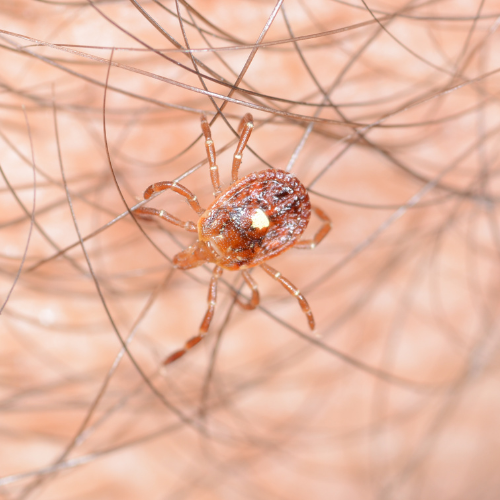As the weather starts to cool down and we begin to spend more time outdoors, it’s important to be aware of the dangers of seed ticks. Seed ticks are the larval stage of both Lone Star and Deer ticks, and they’re tiny – about the size of a poppy seed. The biggest issue with larval stage ticks, is the sheer number of them, they’re even referred to as “tick bombs!”
of the dangers of seed ticks. Seed ticks are the larval stage of both Lone Star and Deer ticks, and they’re tiny – about the size of a poppy seed. The biggest issue with larval stage ticks, is the sheer number of them, they’re even referred to as “tick bombs!”
They’re most active from mid August through early October, and experts at hitching a ride on unsuspecting humans. Once they’ve found a suitable host, they’ll feed for several days before dropping off and entering their next stage of development.
Seed Tick Prevention
To protect yourself from seed ticks (and other ticks too, of course), follow these simple tips:
- Wear light-colored clothing
- Use an insect repellent containing DEET or permethrin
- Avoid high-standing grass areas
- Check for and remove any ticks promptly after spending time outdoors
Seed Tick Removal
Due to the size and quantity of seed ticks, standard tick removal usually won’t work. Instead, press tape or an adhesive over the ticks. Helpful hint: Lint rollers work great!
In the event a tick is embedded, follow these steps.
Enjoy the beauty that comes with fall in Maryland and Northern Virginia while protecting yourself from seed ticks and the dangers they carry.
